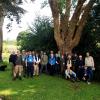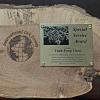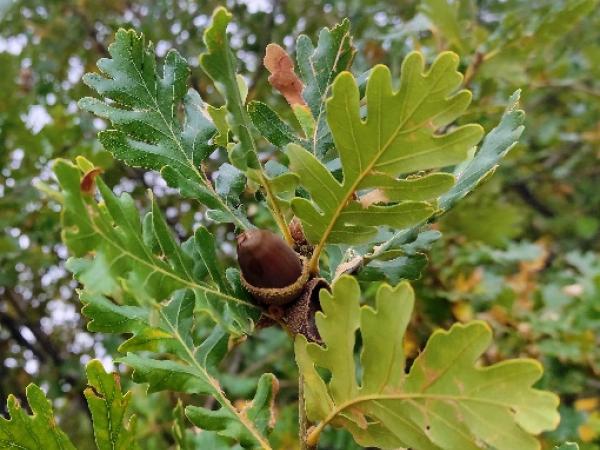Editor's Picks
Plant Focus
 |
| Tim Boland collecting Quercus lyrata in the Ozarks, 2014. |
Where are you from?
I was born and raised in Grand Rapids, Michigan.
What is your professional background?
I attended college at Michigan State University (MSU) where I received a degree in Landscape Horticulture in 1985. I would move onto a curatorial internship at the Scott Arboretum of Swarthmore College, Swarthmore, PA In 1985-86. From there I obtained and participated in a one-year horticulture fellowship at the Royal Horticulture Society, RHS, Wisley, 1986-1987. In 1988-1998, I returned to work full-time at MSU managing their 26-acre nursery that provided the plants for the campus Arboretum as well as six public gardens on campus. While employed at Michigan State University I became interested in plant ecology, biogeography, and systematics. At MSU, I was providing plants for the undergraduate systematics courses, which would ignite my interest in the evolution of plants and their interrelationships. This would lead to obtaining a Master’s Degree in Botany with a specialization in plant ecology, evolution, and systematics. In 1998-2002, I moved onto The Morton Arboretum to become the Curator of Horticulture. In 2002 I became the Curator of the Polly Hill Arboretum on the island of Martha’s Vineyard, West Tisbury, MA. In 2004, I became the Executive Director of the PHA, a position I maintain today.
How did your interest in oaks start?
While working at MSU, I would collect wild seed for distribution as part of the International Seed exchange program known as the Index Seminum. I was very interested in two related species of oaks, Quercus muehlenbergii and Q. prinus. I would collect these plants in the wild, and would later become increasingly obsessed about oak diversity. My main source for collection location information was working with site data found on herbarium specimens at the MSU herbarium (MSC). I would more or less become an herbarium fixture looking at oak specimens but also native tree species that reached the peak of their northern range in Michigan. The herbarium Curator, Dr. José Panero, took notice of my intertest, particularly with oaks. Dr. Panero was working on the Flora of Oaxaca, Mexico. He provided funding for me to travel to Oaxaca to collect and document oaks. Imagine growing up in frigid Michigan and being transported to Oaxaca, Mexico! This experience would change the way I looked at oaks, particularly my understanding that plants are vulnerable to extinction. The oak trees and forests of Mexico were rapidly being destroyed. Some of the sites we came across were destroyed, others in a state of rapid decline. The depth of poverty was in a strange way a valuable thing for me to witness. It made me realize that our own consumeristic tendencies as (economically comfortable humans) are equal if not more devastating to our planet than poor people just trying to survive.
I would later work with Dr. Kevin Nixon of Cornell University, Ithaca, NY, on the identification of my collections. Dr. Nixon remains an inspirational colleague for his work with oaks and his guidance through the years.
How did you come to join IOS?
I joined in 1995 and 1997 attended the 2nd IOS Conference held at The Huntington Botanical Garden, Pasadena, California. I had become good friends with Guy Sternberg, who was an oak mentor of mine and also a Pawpaw (Asimina triloba) enthusiast. My graduate work also led to this meeting. It was there that several of my best oak friendships were established: Thierry Lamant, Dirk Benoit, Michael Meléndrez, Shaun Haddock, and of course Dan (the Oak Man) Keiser. The trip was fantastic, especially the Pre-and Post-Conference Tours into the wild lands of California. Each day on the road was followed by a night of great food and comradery.
Which are your favorite oaks?
Hard one! Well, because of my early interest in Quercus muehlenbergii, it remains quite dear to me. It was my gateway tree drug into Quercus! I would say Q. magnoliifolia is a favorite, a dried leather-like leaf is on my office windowsill at work. Perhaps a more contemporary favorite is post oak, Q. stellata. Five large naturally occurring clumps (estimated at 400-500 years old) grace our property. These ancient trees have been top harvested numerous times since European arrival on Martha’s Vineyard, in 1602, yet they persist, very inspiring!
An oak anecdote you would like to share?
Not really, but would add that plants are powerful! Many people don’t understand this comment when I frequently bring it up. The majority of humanity does not realize that the entirety of human existence has been made possible by green plants. The genus Quercus is tightly interwoven with human history, this story should be told in as many venues as possible!
Anything else you would like to add?
Thank you for allowing me to share my oak journey, it has been a central and inspiring theme in my plant life, I am very grateful!















